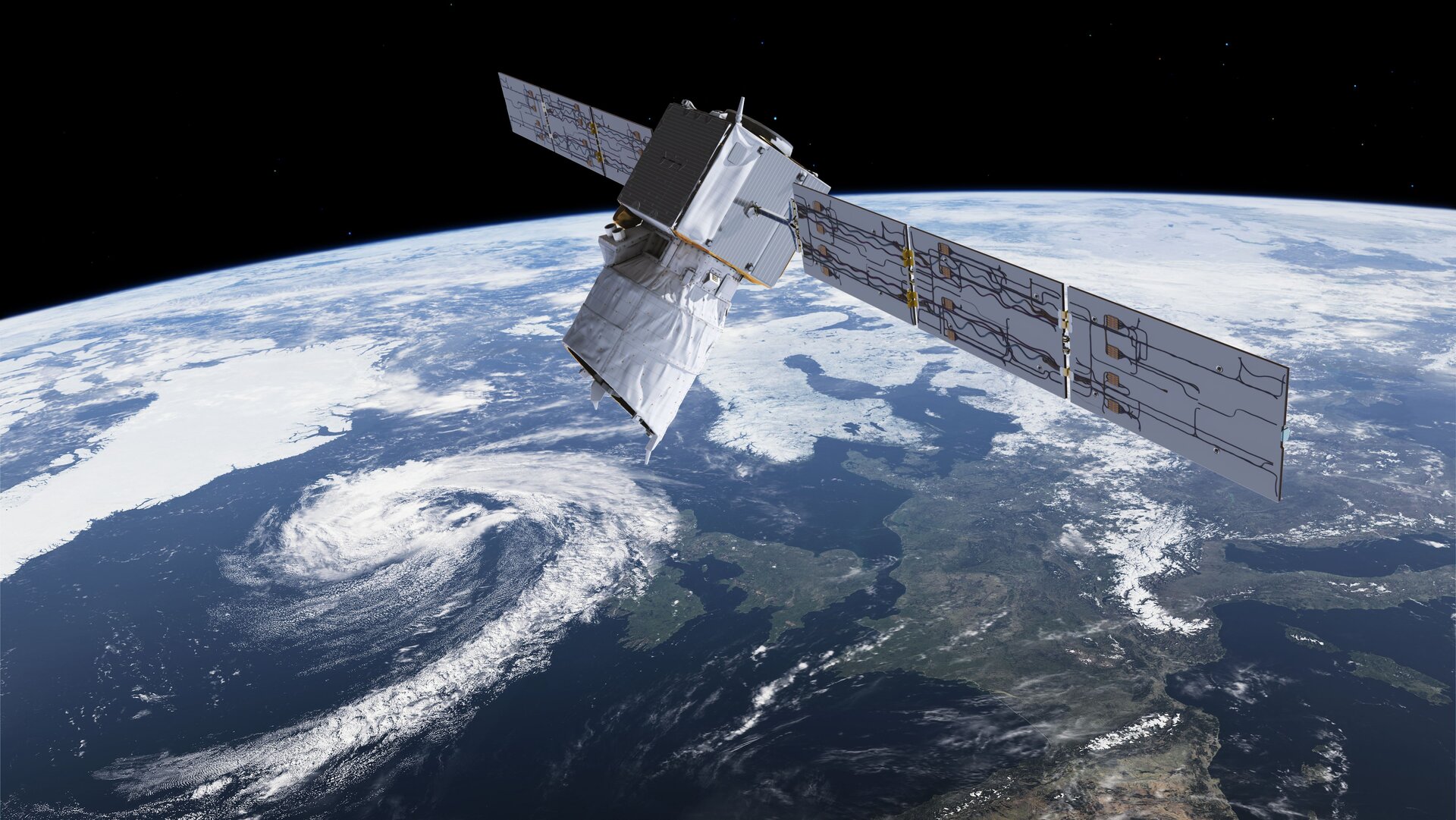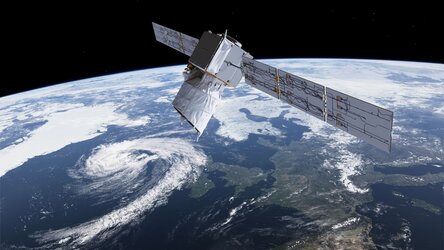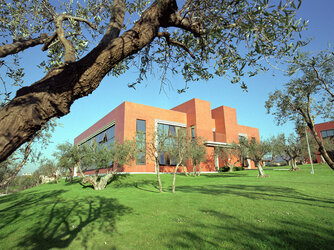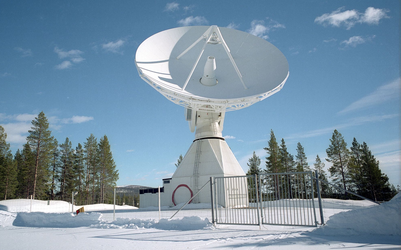Facts and figures
Launched: 22 August 2018 from Europe's Spaceport in Kourou, French Guiana
Launcher: Vega
Satellite: cubic platform and cylindrical instrument structure, weighing 1360 kg (including 266 kg fuel)
Instrument: direct detection Doppler wind lidar, Aladin, operated at 355 nm; separate detection of molecular and particle backscatter (high-spectral resolution)
Mass: 1360 kg (including fuel)
Dimensions: 4.60 × 1.9 × 2.0 m (launch configuration)
Power: 2.4 kW deployable solar array (2×3 panels) with GaAs cells; 84 Ah Li-ion battery
Orbit: altitude of 320 km and inclination of 97°; Sun-synchronous, 7-day repeat cycle
Mission control: ESA’s European Space Operations Centre (ESOC) in Darmstadt, Germany
Communication: ground stations in Kiruna, Sweden (telemetry); Svalbard, Norway and Troll, Antarctica (science data)
Data processing: Tromsø, Norway, managed by ESA’s Centre for Earth Observation (ESRIN) in Frascati, Italy
Mission life: exceeding its planned 3-year life in orbit, the mission ended on 28 July 2023
Wind profile retrieval: European Centre for Medium-Range Weather Forecasts (ECMWF) in Reading, UK
Project and commissioning: managed at ESA’s European Space Research and Technology Centre (ESTEC) in Noordwijk, The Netherlands
Operations: managed at ESA’s Centre for Earth Observation (ESRIN) in Frascati, Italy
Prime contractor: Airbus Defence and Space















 Germany
Germany
 Austria
Austria
 Belgium
Belgium
 Denmark
Denmark
 Spain
Spain
 Estonia
Estonia
 Finland
Finland
 France
France
 Greece
Greece
 Hungary
Hungary
 Ireland
Ireland
 Italy
Italy
 Luxembourg
Luxembourg
 Norway
Norway
 The Netherlands
The Netherlands
 Poland
Poland
 Portugal
Portugal
 Czechia
Czechia
 Romania
Romania
 United Kingdom
United Kingdom
 Slovenia
Slovenia
 Sweden
Sweden
 Switzerland
Switzerland



































